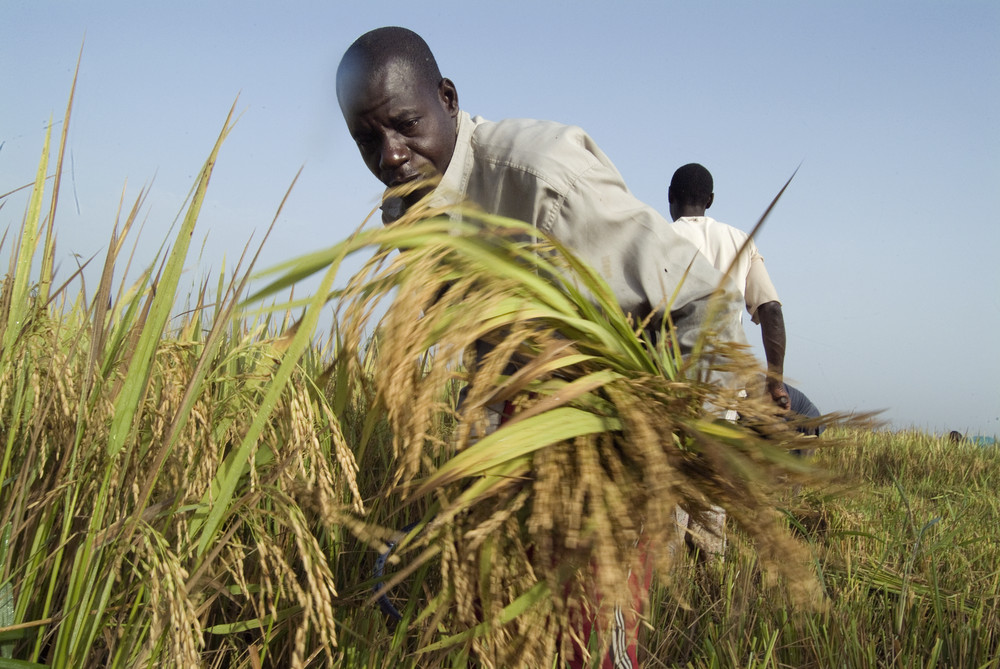
In the context of the nutrition, food and agriculture related sectors, a number of actors along the value chain, from production to final consumption, are affected by a number of risks which are pervasive and interconnected. Input and service providers, farmers, traders, processors, retailers/ wholesalers and consumers are exposed to the vagaries of weather and other uncertain events but the extent and consequences of risks are often much greater among people whose livelihood depends on agriculture and natural resources than in other groups.
For this reason, FAO, in collaboration with the European Union, the New Partnership for Africa’s Development (NEPAD), PARM/ IFAD and other partners, is proposing to join efforts and combine their extensive expertise to develop a set of e-learning materials on Agricultural Risk Assessment and Management in Developing Countries, to bridge the gap in management of production, price, food insecurity and other risks at farm level, as well as across the agricultural value chain.
The workshop will bring together practitioners and stakeholders from government, knowledge and cooperation partners, farmers organizations, regional economic communities and private sector to jointly design an e-learning curriculum on Agricultural Risk Assessment and Management (ARAM) to be developed in support of capacity development for managing agricultural risks in developing countries.
Workshop Objectives
The main objective of this course is to equip policy makers and relevant stakeholders with the appropriate guidance to conduct agricultural risk assessment and select the effective response options, strategies and approaches. More specifically, the course will raise awareness and develop capacity of policy officials and advisors, development experts and planners, civil society organizations, including producer organizations, actors in the supply chain, researchers and extension agents, staff in agricultural education institutes, and other stakeholders in the following areas:
- Risk assessment, covering the identification, mapping and characterization of risks, including the probability of occurrence and consequences, development of risk profiles and measures taken at:
- Micro level (includes actions taken by individual/household farms and firms, through enterprise strategies and various management practices);
- Meso level (includes joint actions with other farmers and firms such as community networks, farmer groups, and industry associations, and in interaction with other supply chain participants through contractual arrangements, information flows, and other means, with some distribution or sharing of risk among those players); and
- Macro or external level (includes actors outside a specific supply chain- banks, insurance companies, government agencies, and donor agencies – share or absorb part or major elements of the risk through various financial instruments, physical stock-holding, and other means).
- Risk management vs crisis management: understanding the qualitative change and transformation that needs to take place in order to address the issue of low productivity and food insecurity requires a change of paradigm. The ex-post management of crisis that overwhelm national governments and local populations need to be overtaken by a new ex- ante and holistic agricultural risk management approach;
- Assessment, identification, selection and prioritization of risk management options involving:
- The assessment and identification of the strength and weaknesses of informal risk management instruments;
- The assessment, identification and evaluation of various formal-sector tools and policy instruments (government- and market-based agricultural risk management instruments);
- The assessment, identification and evaluation of various government policy tools that can enhance or complement private initiatives; and
- The ranking various instruments according to effectiveness and impact criteria
- Mainstreaming agricultural risk management into national investment and development plans:
- Institutional contexts and capacity assessment to identify complementary measures addressing the constraints faced in terms of capacity, infrastructure and institutional development; and
- Formulation of a national policy and strategy to be integrated into investment and development plans
- Monitoring and evaluation based on selected relevant indicators and setting up accountability mechanisms
Expected Outcomes
The course is expected to be followed by specific training programmes targeting different groups such as farmers and service providers (e.g. insurance firms). Farmer-oriented crop- and region-specific courses could be designed for a face-to-face training or blended learning, which combines different training media (e.g. technologies, activities and events). Traditional instructor-led training is supplemented with electronic formats in blended learning.
A number of partners, including subject matter experts from around the world, are involved in the development, peer review and translation of content and ensure high-quality of the learning materials. The e-learning course will be designed using sound constructivist pedagogical principles such as developing learner-centred content. The e-learning course will be rich in interactive elements, examples and case-based scenarios with a blend of original illustrations, graphs, tables and photographs to help users visualize and understand specific information. Instructional designers will take care of the design of the courses while courseware developers design and publish the courses by paying attention to the diverse needs of users.
The e-learning course will be made freely available as a global public good. The course will be accessible online- directly downloadable from the web, and available on CD-ROM free of charge for areas with limited Internet connectivity. In addition, once the e-learning resources have been developed, these can be delivered in a “blended” manner, in combination with other methods, including synchronous online courses lead by subject matter experts and face-to-face training. These e-learning resources will be delivered through existing platforms and networks in order to reach a wider and multifaceted audience. Through e-learning, and by diversifying delivery mechanisms and methods, the impact of awareness raising and capacity development interventions can greatly be increased.